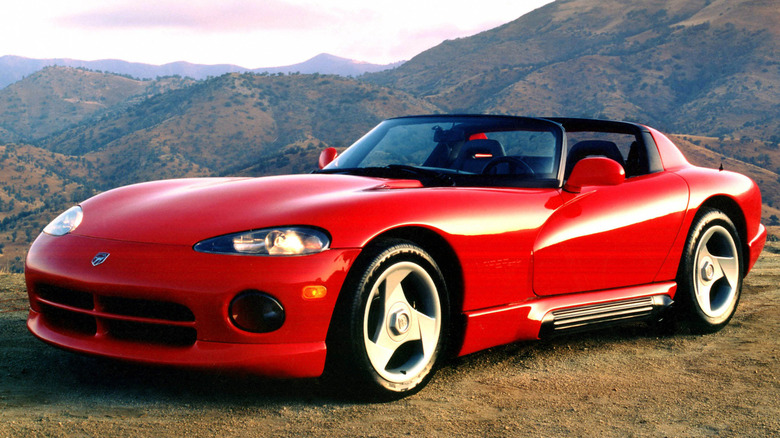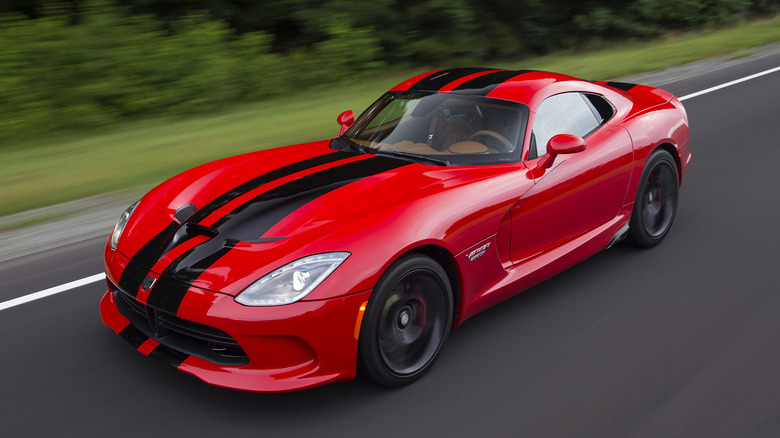Why The Legendary Dodge Viper Is One Of The Most Difficult Supercars You Can Drive
The Dodge Viper has a reputation for being powerful, brutish, and particularly scary to drive. But why? In 1992, when the Viper was introduced, it produced 400 horsepower and 465 lb-ft of torque — admittedly, not much compared to some of the 1,000-horsepower monsters being made today. The Viper's power came from a massive 8.0-liter V10, though, and that engine was raw and unrefined with hot exhaust pipes running right underneath the door sills. Reviews at the time noted just how bad the V10 sounded, with each of the two exhaust pipes carrying an uninspiring five-cylinder noise alongside the car. The exhaust pipes didn't just sound bad, they were also dangerous: Step out of the car without caution after a long drive, and you were liable to seriously burn your legs if you touched them. Dodge even printed a warning on the door sills to make sure drivers knew about this problem.
On top of the aggressive powerplant and hot exhaust, the Viper wasn't equipped to keep drivers very safe or comfortable either. Traction control, airbags, stability control, and even anti-lock brakes were all left off the build sheet. It had no windows, either. A canvas top was meant to shield you from the elements, but it was thin and not very useful, and Dodge didn't offer any sort of hard-top. Oh, and the only door handles were on the inside. Generally, the Viper wasn't very concerned with usability or friendly performance — just outright speed. Over several generations, and with some improvements over time, the Viper became a fan favorite, but it wasn't exactly approachable in the beginning.
The Viper got much friendlier over time
By today's standards, the Viper's horsepower isn't exactly astonishing. In 2025, base versions of the Corvette put out nearly 500 horsepower and are preposterously easy to drive fast, as I found out during a recent test drive. Even the Corvette that the Viper competed against back in 1992 was putting out 300 ponies. The upgraded ZR1 had 375 horsepower, but both those Vettes had windows and traction control.
The lack of driver aids and creature comforts contributed to the Viper's intimidation factor. Dodge added those features over time, and the Viper became more civilized in the process. We rank the second-generation Viper as the best, in part because of its eye-catching design, but also because it received features like door handles, windows, and airbags. Traction control, astonishingly, wasn't added until 2013.
I've driven several modern Dodge Vipers and spent hundreds of miles behind the wheel of a fifth-generation Viper. Compared to other modern sports cars, these later Vipers aren't particularly scary. At the end of its production run in 2017, the Viper was still using a V10, but it was larger and more powerful (a full 8.4 liters), putting out 645 horsepower and 600 lb-ft of torque. Those are much more intimidating numbers, but the power was reined in with stability control, traction control, and anti-lock brakes. But the lack of any driver aids on early models lends a bit of weight to the Viper's legend — only the strong could survive such a harrowing drive.

